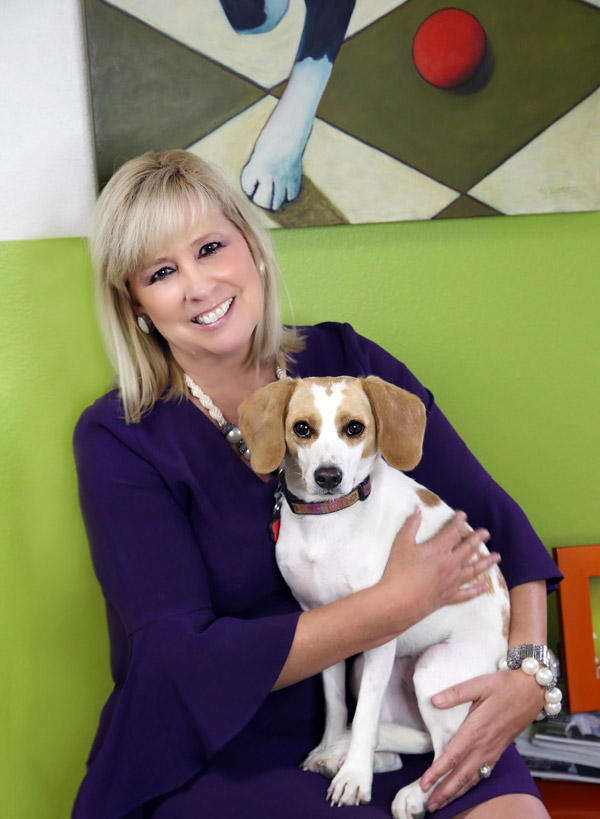Legal column: When the plan works
Local attorney Teresa J. Rhyne.
By Teresa J. Rhyne
– Lawyers often deal with mistakes and problems encountered when a financial, tax, or estate plan goes wrong. Fortunately, we also see a lot of plans go very well. When clients plan carefully, focus on their goals, and involve a team of professionals, the outcome is often not only the result the client wanted, but a genuine legacy. Let’s look at some plans that worked.
A father’s legacy
I had a client who was an engineer; we’ll call him Bill. Bill came up with a formula for how and when assets would be distributed at his passing from his trust to his children and grandchildren over many years. The formula was very unique, just like he was. At first, it looked complicated. I worried that no one would understand it, let alone be able to “do the math” and carry it out. After discussing my concerns with Bill and his wife and adult children, we brought in the CPA. The formula was discussed among the group until everyone understood it, and, most importantly, the CPA and trustee knew how it was to work.
It’s been several years since that client passed away. When the first distribution was made from the trust and “the formula” was implemented, we all smiled remembering Bill and the way his mind worked. He devised a method for making sure his kids and eventually his grandchildren received a gift from him—and it worked. In practice, the formula was much easier than we originally feared. Now, annually, the children receive not just a monetary distribution, but a unique memory of their father. I’m just the attorney, and yet each year when the distribution is made, I smile and remember Bill fondly. What we came to call “The Formula” became a part of a much larger legacy.
A family legacy
Another client was diagnosed with terminal cancer. His was a large estate, and he was unmarried, with five adult children. He believed in the Warren Buffet philosophy of giving his kids enough money to do something, but not enough to do nothing. We implemented two types of trusts for his children. The first was an individual trust for each child that gave them income regularly and principal if they needed it for health, education, support, or maintenance (under very specific circumstances). The second was a common trust, available to all descendants in equal or unequal shares that rewarded certain types of behavior—matching 50% of the child’s own earnings up to a certain amount, cash rewards for finishing various levels of schooling, funds to start a business, providing a down payment of no more than 20% for a home, and other behaviors that were important to my client. Since the second trust existed for all of his descendants, he was able to encourage these behaviors for generations to come.
A charitable legacy
Susan was very charitably minded-during her lifetime, and she wanted to instill that behavior in her children. We discussed many options for charitable giving in her estate planning. Ultimately, Susan opted for a donor-advised fund (a “DAF”) with the local Community Foundation. She set up the DAF during her lifetime and specified what types of charitable organizations the fund was to benefit—cancer research, scholarships for women entering college later in life, animal rescue, and the arts.
At her death, funds were transferred from her trust to the DAF, and the estate received a charitable deduction. Susan had named her three children as the advisory board. Thus, annually the children meet to discuss the fund’s status and how much they’d like to have the fund distribute to charity. But the joyful part comes when the children get to review various charities and their programs to decide which to support in their mother’s name. The children are not resentful of the funds that went to charity, but rather consider the annual giving a wonderful way to honor their mother. Their mother’s memory lives on, and her legacy of giving continues.
Simplicity
A well-thought-out plan doesn’t need to involve trusts or funds that last for generations or even years. Sometimes a clear, concise, carefully considered estate plan can be a legacy in itself. If the documents clearly state your intentions, and the appropriate parties are named to execute the plan, your heirs will appreciate it even more. Consistently communicating your intentions during your lifetime can also go a long way to leaving a legacy of love, rather than fuel for a bitter battle.
Conclusion
An estate plan that includes a trust that continues for years is not always “controlling from the grave.” Sometimes a trust that involves annual activity can be a meaningful way to share your legacy by sharing not just your wealth, but your values, goals, and hopes for your beneficiaries. And sometimes, a simple, direct estate plan discussed with your advisors and your beneficiaries can be a wonderful legacy as well. In either case, you simply need to consider your goals, consult your advisors, and implement a plan.
Note: This is not legal advice to you individually, and you should rely on your own family law and estate planning attorneys to advise you.
Teresa J. Rhyne is an attorney practicing in estate planning and trust administration in Riverside and Paso Robles, CA. She is also the #1 New York Times bestselling author of “The Dog Lived (and So Will I)” and “Poppy in The Wild.” You can reach her at Teresa@trlawgroup.net.





















